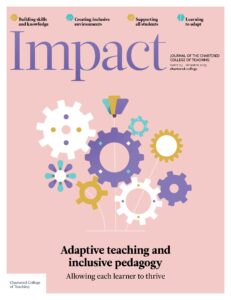Exploring successful reading practices in high socio-economic disadvantage areas: A case study of three high-performing inclusive primary schools
Written by: Jo Tregenza

9 min read
JO TREGENZA, READER IN PRIMARY EDUCATION, UNIVERSITY OF SUSSEX, UK
This study considers how primary schools in areas of high levels of social disadvantage are achieving better than expected progress in reading development. Better than expected progress has been defined by the Department for Education (DfE) as higher percentages of children meeting the expected standard in reading by the age of 11 (Standards and Testing Agency, 2017). With over 24.6 per cent of children on free school meals (FSM) (GOV.UK, n.d.) and widening attainment gaps, it’s crucial to focus on schools achieving above-average reading progress. The aim of the study is to identify whether there are commonalities in the approaches that each school takes to achieving better than expected progress in reading.
Methodological approach
A case study was selected as the preferred form of research, because the key research questions focus on how reading is taught. This case study has multiple sources of evidence from par
Join us or sign in now to view the rest of this page
You're viewing this site as a guest, which only allows you to view a limited amount of content.
To view this page and get access to all our resources, join the Chartered College of Teaching (it's free for trainee teachers and half price for ECTs) or log in if you're already a member.
- Brooks DN (2017) (Re)conceptualizing love: Moving towards a critical theory of love in education for social justice. Journal of Critical Thought and Praxis 6(3). DOI: 10.31274/jctp-180810-87.
- Clay MM (1991) Becoming Literate: The Construction of Inner Control. Canada: Pearson Education.
- Cremin T, Mottram M, Collins FM et al. (2014) Building Communities of Engaged Readers: Reading for Pleasure. Abingdon: Routledge.
- Fountas IC and Pinnell GS (2012) Guided reading: The romance and the reality. The Reading Teacher 66(4): 268–284.
- Gazeley L (2022) Problematising flagship ‘disadvantage’ policies in English schools: Agenda setting and incoherence in the absence of an over-arching theory of change. International Studies in Sociology of Education 33(3): 301–322.
- GOV.UK (n.d.) Compare the performance of schools and colleges in England. Available at: www.gov.uk/school-performance-tables (accessed 7 May 2024).
- Grace G (2020) Taking religions seriously in the sociology of education: Going beyond the secular paradigm. British Journal of Sociology of Education 41(6): 859–869.
- Rasinski TV, Tschantz B, Austin J et al. (2020) Time for reading instruction: How much time should schools and teachers devote to reading instruction in Grades K-2? World Journal of Educational Research 7(1): 68–80.
- Standards and Testing Agency (2017) Information for schools and parents: Primary school progress measures. Available at: https://assets.publishing.service.gov.uk/media/5a7f648940f0b6230268f39d/STA177916e_Primary_school_progress_measures_leaflet_V6_FINAL.pdf (accessed 10 April 2025).
5
1
vote
Please Rate this content
Please login to comment
0 Comments
Oldest
Newest
Most Voted
Inline Feedbacks
View all comments










